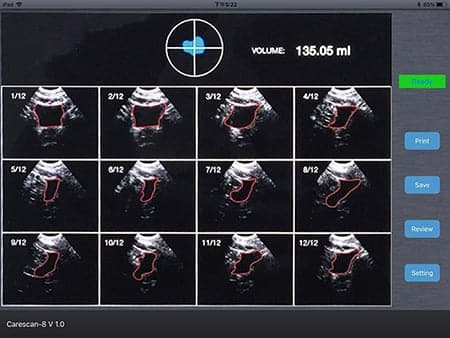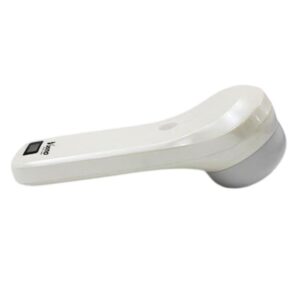Post-void residual (PVR) urine volume is defined as the amount of urine left in the bladder right after urination. It can be measured by catheterization or non-invasively by ultrasonography.
Postvoid residual measurement assesses the volume of urine in the bladder after voiding and can be performed either in the doctor’s office, at home, or by a nurse at a long-term care facility or nursing home.
One method is to have the patient void and then measure any residual urine by placing the ultrasound scanner on the patient’s bladder. The scanner will use its high bladder wall recognition technology to identify the organ and to start measuring the volume of the remaining urine after voiding.
The urologist, or general practitioner, will then decide if the post-void residual urine volume is within the norm according to the patient’s age. A PVR of 50 to 100 mL is generally accepted as normal in the elderly.
If the bladder cannot be completely emptied, so-called residual urine remains. Since the rinsing of the bladder is impaired, germs can easily settle on the inner wall of the bladder and cause infections. This encourages as well the formation of urinary stones, which can be directly harmful to the entire urinary system.
PVR is a way to help detect urinary tract disorders if there are any.
The bladder, the external sphincter, and the detrusor activities must be synchronized for a healthy voiding. A dysfunction in 1 part can result in PVR.
PVR varies in a given individual, hence multiple measurements are often necessary. Therefore, an invasive measuring method, such as catheterization, is not encouraged. Vendra Medical team suggests ultrasonography, instead, specifically using the Wireless Bladder Ultrasound Scanner: Vsono-BL1
The Bladder Ultrasound Scanner: Vsono-BL1 is used to non-invasively visualize, monitor, and measure the urine volume in the bladder, with a measuring range of 10ml to 2000ml.
This bladder ultrasound scanner is light and pocket-sized, allowing for a more convenient and easier examination.
References:
Postvoid Residual Urine
The Urinary System
-
 Wireless Bladder Ultrasound Scanner: Vsono-BL1$2,376.15
Wireless Bladder Ultrasound Scanner: Vsono-BL1$2,376.15$2,658.25



